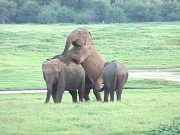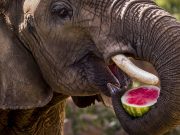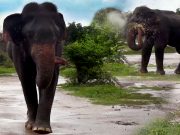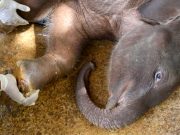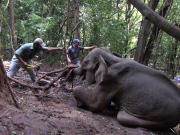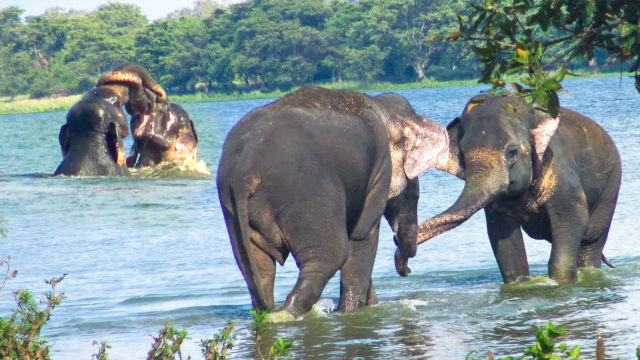Elephants are the largest land animal on earth and are fond of big fun. They can live up to 70 years of age and during this lifespan, they develop quite close and deep bonds with their families. With such close social ties and a lifespan so long, they get a lot of time for closeness and fun.
Having fun, mud baths are the must-haves and an all-time favorite of the elephant community.
Mud baths are an all-time favorite of elephants. In the hot temperatures of Anuradhapura, Sri Lanka, the mud baths provide relief and cooling sensation to the herd. Apart from the cooling sensation during hot summers, elephants also frisk and play with their children and friends in mud baths. Even when kept in captivity, they enjoy and roll around to romp in the mud.
Not only mud baths, but elephants are pretty good swimmers as well. While they are in water, you can’t decide whether they are playing or taking a bath. Why so? Because there’s a lot of dunking and splashing during bath time. Having a fine romp in water alongside their pals is one of the most favorite activities of elephants since they like to cool off in water bodies.
Elephants in water enjoy cooling down by wrestling with the herd members and their friends. Their giant ears also help in cooling down their bodies in extremely hot temperatures. The flapping action of their ears works as a built-in mechanism of cooling.
Asiatic elephants are among the three elephant species which are known to be the largest land mammals. They form herds with complicated hierarchies and social networks. Due to these social networks and their core intelligence and empathy, elephants develop close bonds with their herd. They engage in verbal as well as non-verbal communication to support and show affection to each other.
The ends of elephant trunks are the most sensitive part of their body, so they use them much like we use our fingers. Having more than 100,000 different sensitive muscles, their trunks play a vital role in communication with each other. They caress and stroke the heads and backs of each other to show affection and console their loved ones. The calves put the tips of their trunks in the mouth of their mothers as an act of interaction with the matron of the herd. As these gentle giants engage in courtship behavior, they entwine their trunks together and bind with a friendly trunk wrestling.
Elephants tend to produce different sounds to express their affection, friendliness, and love. For example, the mothers rumble in a soft and soothing manner while they caress their calves, a low noise like a cat’s purr to show pleasure with each other in the herd. The most famous vocalizations of elephants are perhaps their loud trumpets which they produce as a sign of alarm, excitement, happiness, or joy during situations such as the birth of a new calf.
Elephants use visual cues and physical touch to express their emotions. Whether they are gathered around a water hose or grazing, the herd members remain in constant contact by rubbing their bodies together and flapping their ears to show compassion and care for each other. Even when a family member dies, they console each other by pressing together and grieving for the loss. They touch the dead ones with their feet and trunk. However, the playful and friendly gestures of elephants include flapping of ears, flicking the tails, and many others that show their companionship and intimacy with their family members.
The mothers and their calves share the strongest bonds in the herd. Mothers tend to touch their calves consistently; whether moving their trunks over the calves’ heads or taking their tails to guide them. Any time a calf falls down or gets stuck, the mothers as well as other members of the herd provide quick assistance to help it. This means that the empathetic impulses and protective behaviors not only exist between the mothers and calves but also among the other members of the herd. Another example is, when a single member of the herd is injured or unable to walk, the rest of the members in the herd may walk slowly in solidarity so that the injured one is not left behind.








